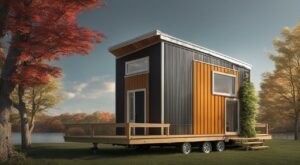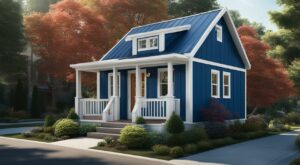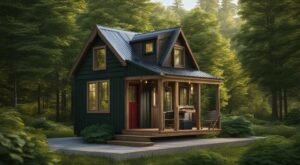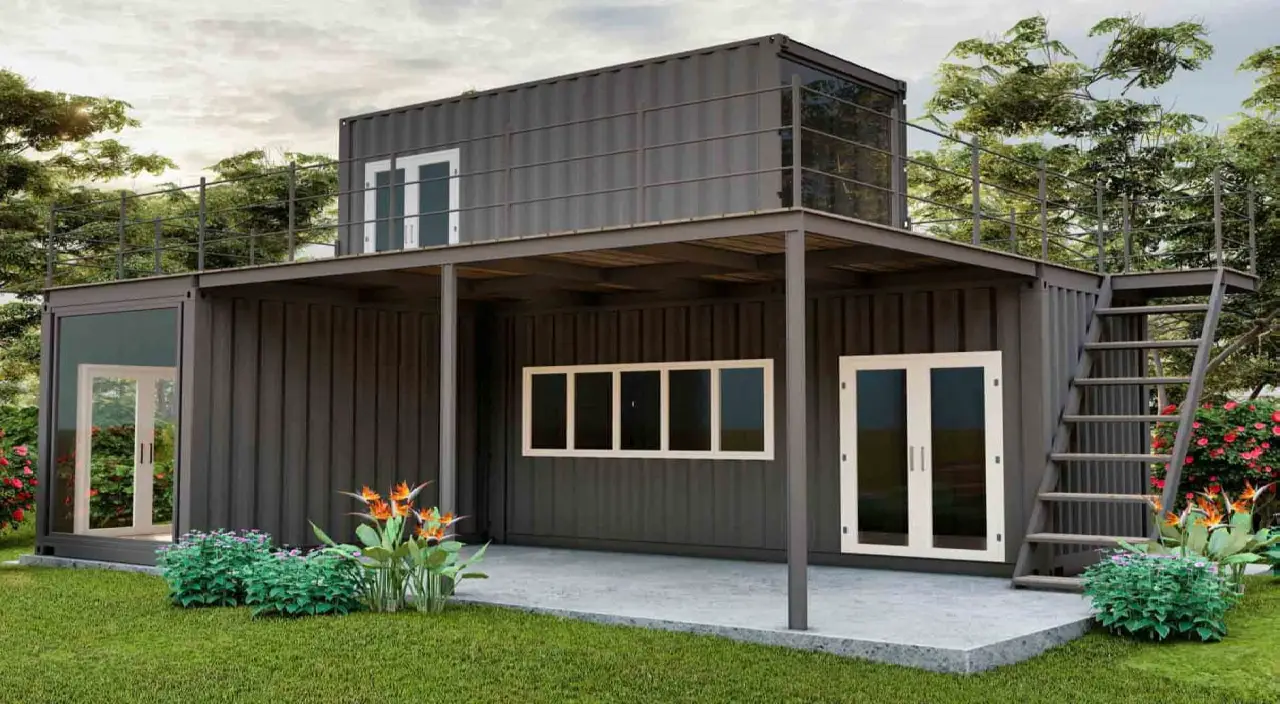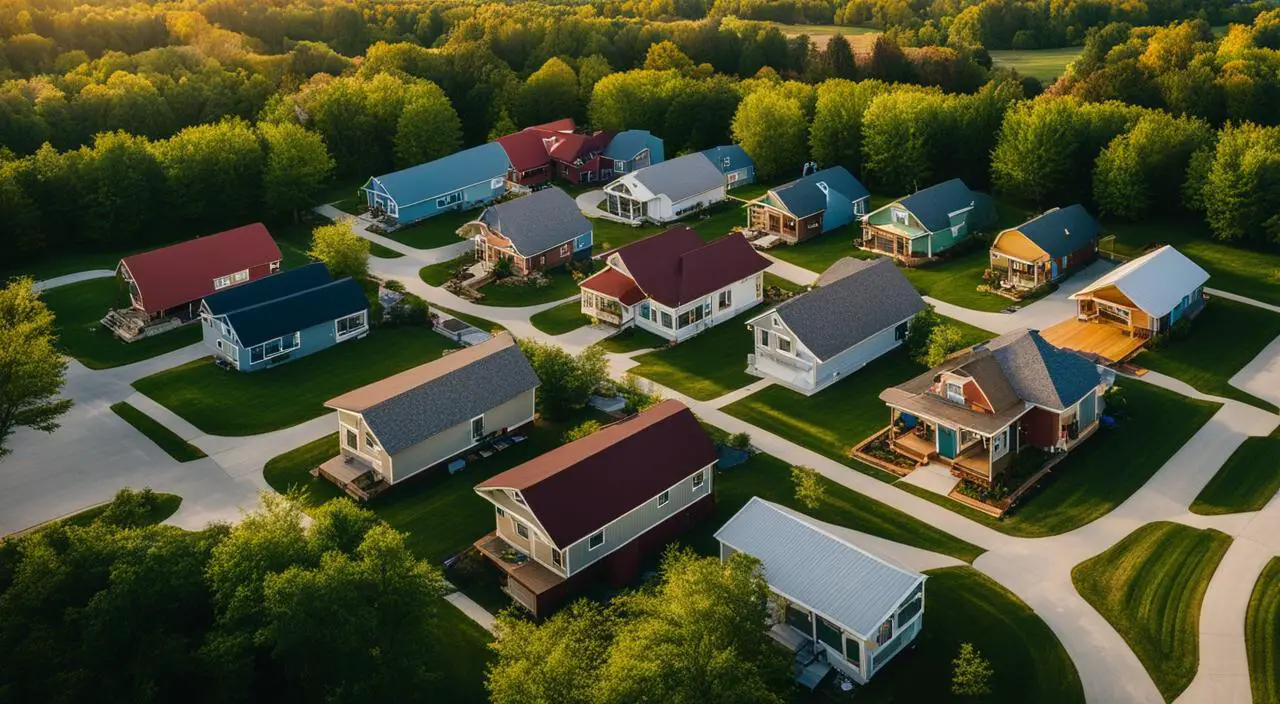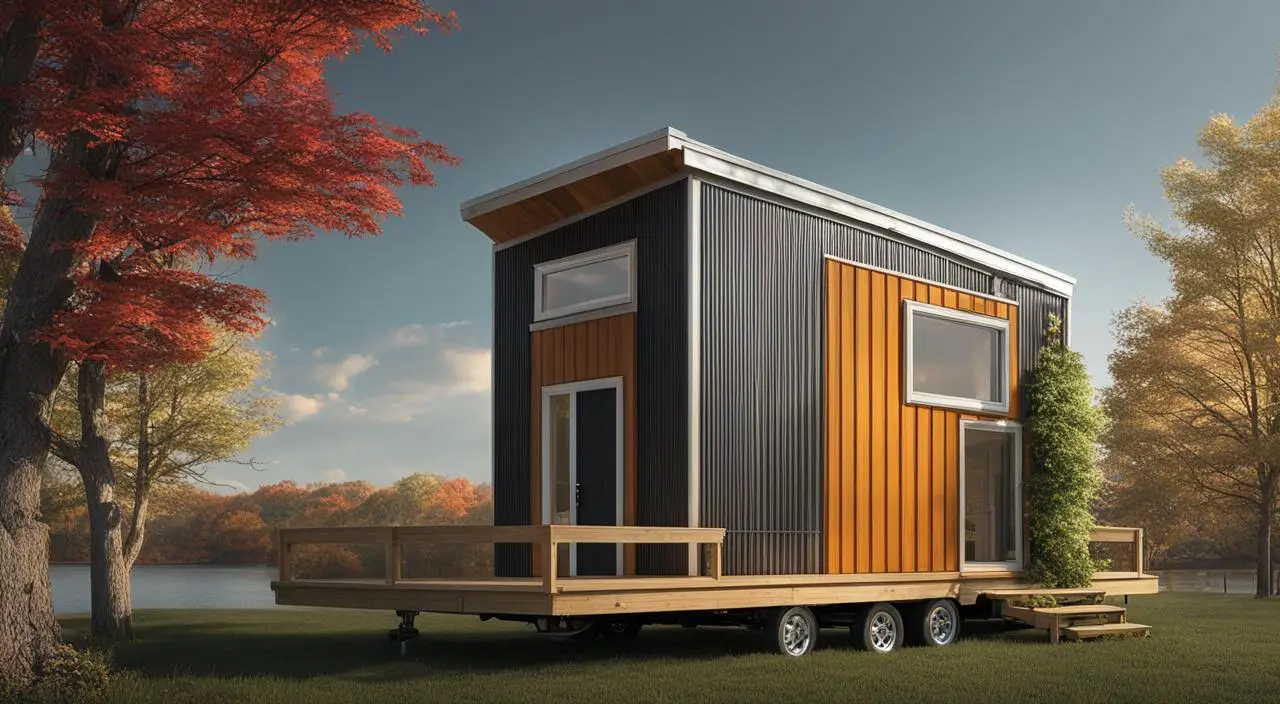Your cart is currently empty!
Tiny House Laws Wisconsin: Understanding The Law
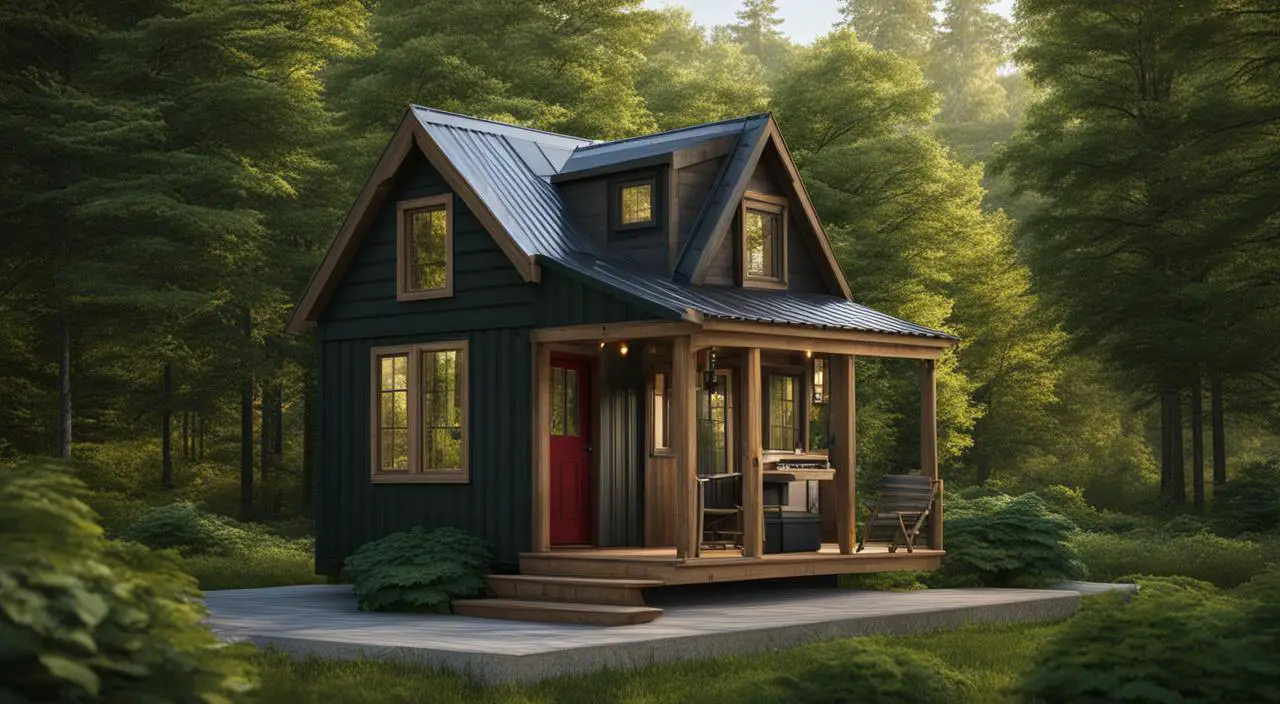
Affiliate Disclaimer: This post may contain affiliate link or links
Living in a tiny house is a popular lifestyle choice for many people in Wisconsin. However, before you embark on this new adventure, it’s important to understand the legal requirements and regulations that come with building and living in a tiny house.
Contents
Wisconsin has specific laws that apply to tiny houses, and it’s essential to be familiar with them to avoid potential legal issues.
In this article, we’ll explore the legal considerations, zoning laws and regulations, building codes, and land use restrictions that impact tiny houses in Wisconsin.
We’ll also discuss permits and legal requirements for building a tiny house in the state and cover the cultural and social aspects of the tiny house movement in Wisconsin.
Legal Considerations for Tiny Houses in Wisconsin
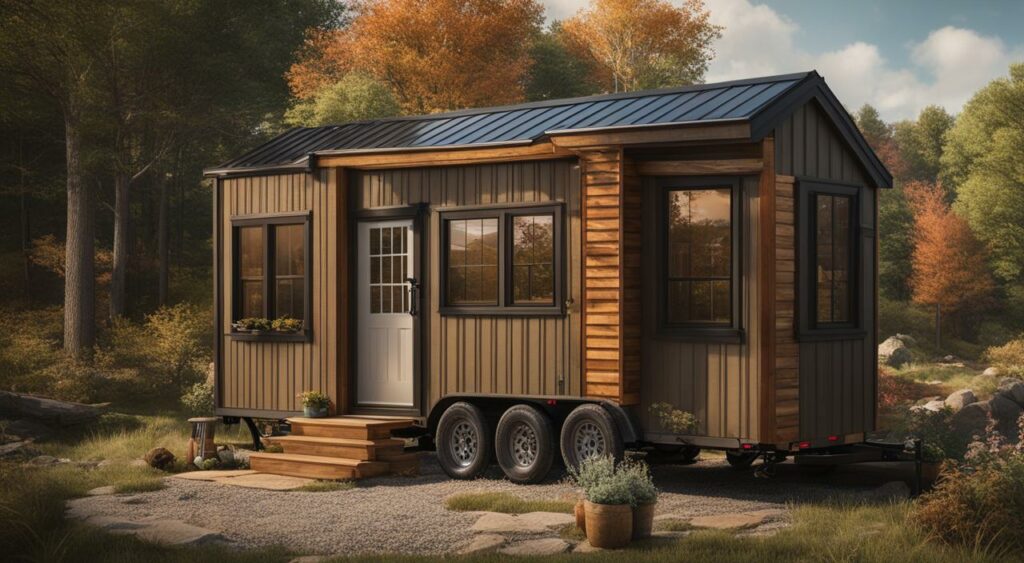
When it comes to building and living in a tiny house in Wisconsin, it is essential to understand the legal requirements and regulations to avoid any legal issues down the road. Some critical legal considerations for tiny houses in Wisconsin include:
Minimum Square Footage Requirements
Wisconsin doesn’t specify minimum square footage requirements for tiny houses. However, the house must meet the International Residential Code (IRC) standards for safety and sanitation, which could impact the minimum square footage.
Compliance with Building Codes
Building codes are regulations that specify how a building should be constructed, including electrical wiring, plumbing, and insulation.
Tiny houses in Wisconsin must comply with the state building codes as well as local building codes, and obtaining permits for construction is necessary before building.
Zoning Regulations
Zoning regulations are put in place to control land use and protect public health, safety, and welfare. Wisconsin has numerous zoning regulations that apply to tiny houses.
For instance, in some areas, tiny houses on foundations might be classified as ADUs (Accessory Dwelling Units) and be subjected to additional regulations.
In other areas, tiny houses on wheels may only be used as recreational vehicles (RVs) and not primary residences.
Consulting with local zoning officials and city planning departments can help clarify the zoning regulations for a specific area in Wisconsin.
Legal Requirements for Tiny Homes in Wisconsin
Some legal requirements for tiny homes in Wisconsin include obtaining permits, complying with building codes, and complying with zoning regulations.
The state also requires that tiny homes be built by a licensed contractor and meet IRC standards.
Homeowners should research and seek guidance on the legal requirements they need to meet to avoid any legal issues in the future.
Building a tiny house in Wisconsin can be a complicated process, but understanding these legal considerations and taking the necessary steps can ensure a successful project.
Zoning Laws and Regulations for Tiny Houses in Wisconsin
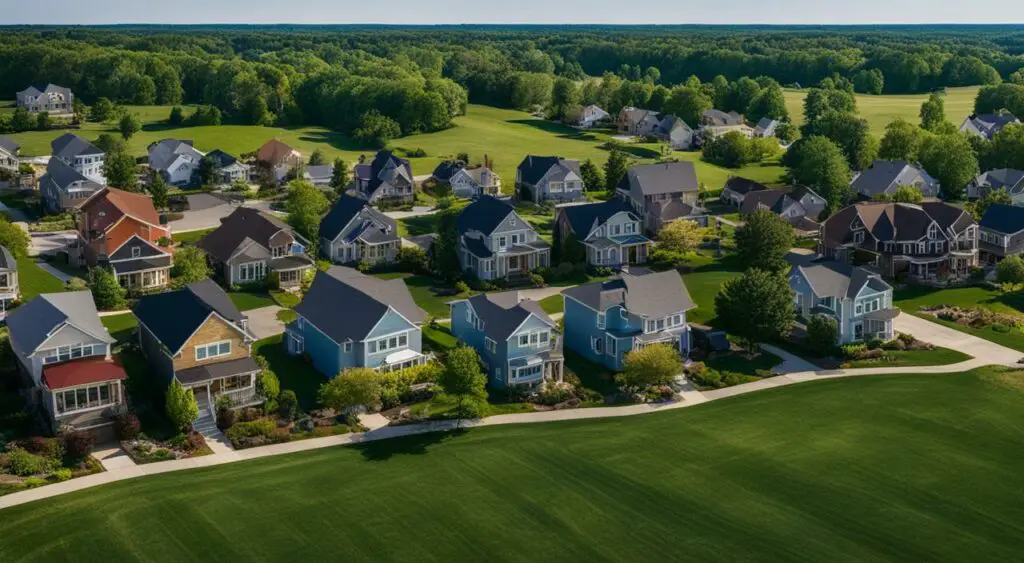
Wisconsin law requires that all homes, including tiny homes, comply with zoning laws and regulations.
As such, it is crucial to understand the zoning laws and regulations in Wisconsin when building or purchasing a tiny house.
The role of zoning laws is to regulate the use of land and buildings and ensure the safety of the community.
Zoning laws are created by the Wisconsin Legislature and enforced by local municipalities, including the city of Madison.
Zoning regulations for tiny houses in Wisconsin can vary by location and zoning district.
In some areas, tiny houses may be allowed as accessory dwelling units on a property with an existing single-family home.
In other areas, they may be allowed as standalone structures on larger lots.
It’s important to note that in Wisconsin, land use restrictions for tiny homes can limit where a tiny house can be located.
For example, some areas may require a minimum lot size or have setback requirements that can impact where a tiny house can be placed.
Comparison of Zoning Regulations for Tiny Houses in Wisconsin Cities
| City | Zoning Regulations | Land Use Restrictions |
|---|---|---|
| Madison | Tiny houses allowed as accessory dwelling units on a property with an existing single-family home. Must comply with size and code requirements. | Must comply with setback requirements. Minimum lot size of 10,000 square feet for standalone tiny houses. |
| Milwaukee | No specific regulations for tiny houses. Must comply with state building code requirements for single-family homes. | Must comply with setback requirements. Minimum lot size of 4,000 square feet for a single-family home. |
| Green Bay | Tiny houses allowed as accessory dwelling units on a property with an existing single-family home. Must comply with size and code requirements. | Must comply with setback requirements. Minimum lot size of 8,000 square feet for accessory dwelling units. |
It’s essential to consult with local zoning officials to understand the rules and requirements in the area where the tiny house will be located.
The legal requirements for tiny homes in Wisconsin can be complex, and seeking professional assistance is recommended to ensure compliance before building or purchasing a tiny house.
Building Codes for Tiny Houses in Wisconsin
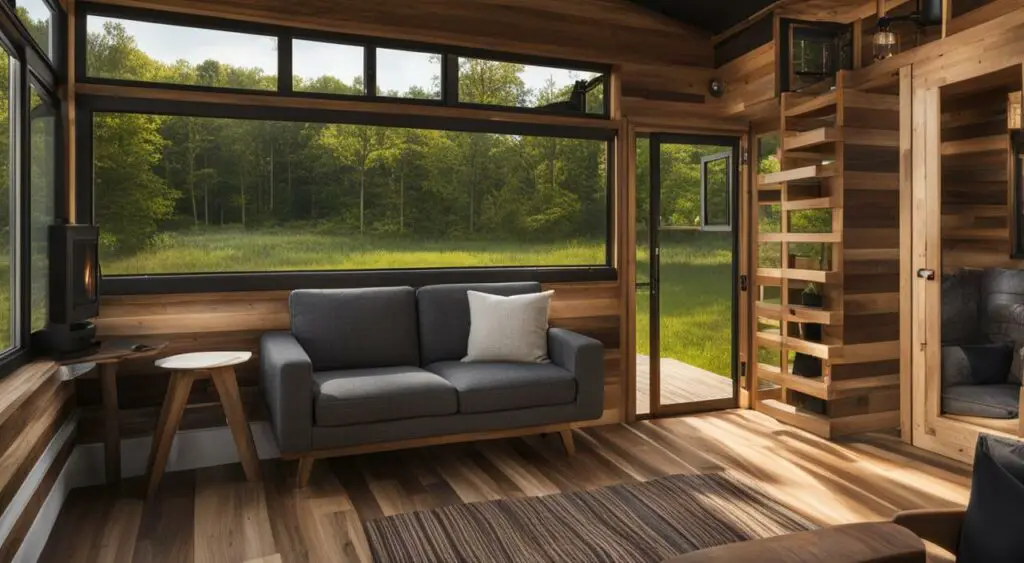
Building codes are a crucial aspect of constructing and owning a tiny house in Wisconsin. These codes ensure that the home is safe, habitable, and complies with all necessary regulations.
It is essential to understand the building codes for small houses in Wisconsin to avoid legal complications during the construction process.
Tiny house builders must comply with the same building codes and regulations that apply to traditional homes.
The regulations may vary based on the location of the home, so it is necessary to research the specific requirements for a particular area.
The building codes for small houses in Wisconsin aim to ensure that the home is structurally sound and can withstand harsh weather conditions.
The codes cover a range of areas, including plumbing, electrical, and structural components of the home.
Permits are also necessary when constructing a tiny home in Wisconsin.
The permitting process is necessary to ensure that the construction meets all the necessary legal requirements.
The permits for tiny house construction in Wisconsin may vary depending on the location of the home and the size of the home.
It is important to work with reputable tiny house builders who are knowledgeable about the building codes for small houses in Wisconsin.
They can ensure that the home meets all necessary regulations and complies with all applicable laws.
“Compliance with building codes and regulations for tiny houses in Wisconsin is crucial to ensure the safety and habitability of the home. It is essential to research and understand the specific regulations that apply to the location of the home to avoid legal complications.”
Zoning Regulations for Tiny Houses on Wheels in Wisconsin
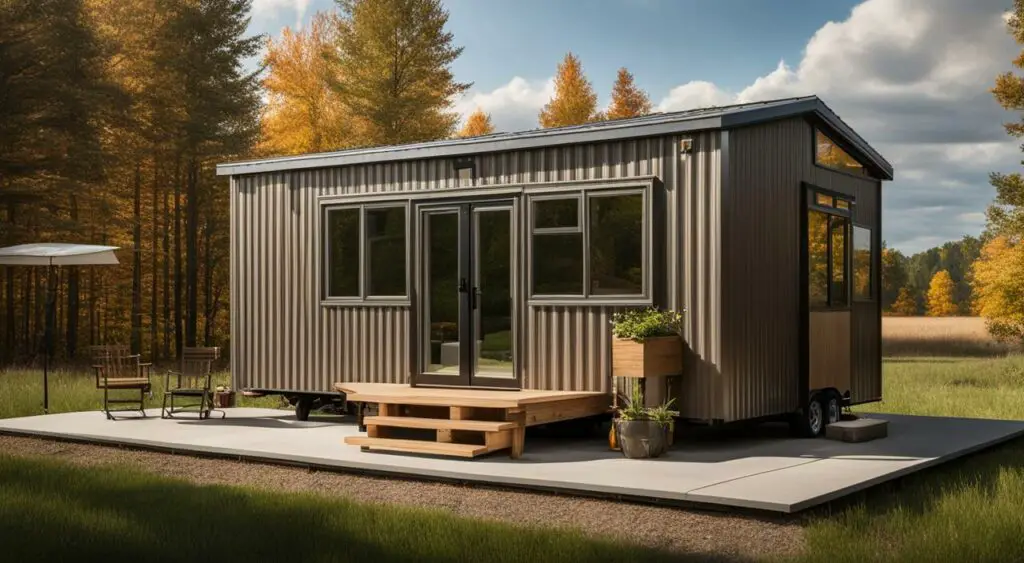
If you plan to build and live in a tiny house on wheels in Wisconsin, it’s important to understand the zoning regulations that apply to your situation.
These regulations can have a significant impact on where you can park your tiny house and how long you can stay in one location.
The state of Wisconsin does not have specific laws regarding tiny houses on wheels, so zoning regulations vary by city and county.
Some communities may allow tiny houses on wheels as a primary residence, while others may only permit them as accessory dwelling units or for temporary stays.
One important factor to consider is the length of time you can park your tiny house on wheels in a particular location.
Many communities in Wisconsin have restrictions on the length of time a recreational vehicle, or any type of dwelling, can be parked in a single location.
Violation of these restrictions could result in fines or other penalties.
Another consideration is whether your tiny house on wheels will be considered a permanent or temporary structure.
This distinction can affect whether you will need a building permit and what types of inspections will be required.
Wisconsin Tiny House on Wheels Regulations at a Glance
Here is a summary of some of the key regulations that may apply to tiny houses on wheels in Wisconsin:
| Regulation | Details |
|---|---|
| Parking | Check with your local municipality for guidelines regarding parking a tiny house on wheels. |
| Building Codes | Depending on the length of stay, tiny houses on wheels may be considered recreational vehicles or permanent dwelling, which can affect the building codes that apply. |
| Zoning | Communities have different zoning regulations that determine the legality of tiny houses on wheels in certain locations. |
Before building or living in a tiny house on wheels in Wisconsin, it’s essential to research the relevant zoning regulations and obtain any necessary permits or approvals.
Accessory Dwelling Units and Tiny House Communities in Wisconsin

Wisconsin has seen a growing trend in the development of tiny house communities and accessory dwelling units (ADUs) as a way to address housing needs and provide more affordable options for residents.
ADUs are small, self-contained units located on the same lot as a larger primary residence, while tiny house communities consist of multiple tiny homes clustered together in a designated area.
Building ADUs and tiny home resorts in Wisconsin requires compliance with local building codes and zoning regulations.
In addition, permits are typically required for the construction of these structures.
These requirements can vary depending on the location of the property and the specific regulations of the local municipality.
One example of a tiny house community in Wisconsin is the Escape Village, located in Rice Lake. The community consists of 28 tiny homes on wheels, ranging in size from 160 to 310 square feet.
The village includes a community garden, fire pit, and a shared clubhouse that serves as a gathering place for residents.
Another example is the Canoe Bay Escape Village in Chetek, which features luxury tiny homes for rent in a resort-like setting. The homes include high-end finishes and amenities such as fireplaces and soaking tubs.
Permits for Accessory Dwelling Units and Tiny Home Resorts in Wisconsin
Permits for ADUs and tiny home resorts in Wisconsin are typically required at the local level.
The process for obtaining these permits can vary depending on the location and the specific regulations of the local municipality.
For example, in Madison, ADUs are allowed in certain residential zoning districts, and a zoning permit is required for their construction.
In addition, an electrical permit and a building permit are required for the installation of electrical and plumbing systems, and a heating permit is required if a new heating system is installed.
In Eau Claire, ADUs are allowed in all residential zoning districts, but only as an addition to an existing primary residence.
A zoning permit and building permit are required for the construction of an ADU, as well as a plumbing permit and an electrical permit for any new systems installed.
Benefits of Accessory Dwelling Units and Tiny Home Resorts
The development of ADUs and tiny home resorts in Wisconsin provides several benefits to residents.
For homeowners, building an ADU on their property can provide an additional source of income through rental opportunities.
It can also provide a housing option for family members or aging parents who want to live independently while remaining close to their family.
For renters, tiny house communities and ADUs can provide a more affordable housing option than traditional apartments.
They also offer the opportunity to live in a tight-knit community and enjoy a simpler, more sustainable lifestyle.
Permits and Legal Requirements for Tiny House Construction in Wisconsin
Constructing a tiny house in Wisconsin involves obtaining the necessary permits and complying with municipal regulations. Failure to do so can result in fines, legal issues, or the inability to live in your tiny house.
Here is what you need to know about permits and legal requirements for building a tiny house in Wisconsin.
Permitting Process
The permitting process for constructing a tiny house in Wisconsin can vary depending on the location and size of the house.
Generally, obtaining a building permit is required, and your tiny house must comply with state and local building codes.
The codes apply to elements such as the structure, plumbing, electrical, and ventilation systems.
Builders who are familiar with these codes are invaluable resources to ensure you meet compliance requirements.
Municipal Regulations
In addition to state building codes, tiny house builders and owners must comply with municipal regulations.
Different municipalities can have different zoning laws, construction codes, and permitting processes.
You will likely need to obtain permits for the construction of your tiny house and comply with specific zoning laws. This means understanding land use restrictions, setbacks, and parking requirements.
Getting Expert Help
Navigating the permit and legal requirements for tiny house construction in Wisconsin can be challenging.
As such, it’s essential to work with a builder or consultant knowledgeable about state and municipal regulations.
They can guide you through the permitting process and ensure your tiny house meets all building and zoning requirements.
Land Use Restrictions and Limitations on Tiny House Living in Wisconsin
Living in a tiny house in Wisconsin is subject to a variety of land use restrictions and limitations that must be taken into consideration when planning a tiny house lifestyle.
One of the main restrictions is the property size.
Zoning regulations require that each dwelling unit built on a property meet minimum square footage requirements. Unfortunately, the minimum square footage required often exceeds the size of most tiny homes.
Setbacks are another limitation that may impact the feasibility of living in a tiny house.
These are the required distances between various parts of a building and the property line, other buildings on the property, and/or the street.
The purpose of setbacks is to provide adequate space for utilities and emergency services and to ensure privacy and safety.
Other regulatory issues include zoning restrictions and covenants.
In some areas, zoning regulations limit the use of tiny homes to certain areas or require special permits for building and living in them.
Covenants, on the other hand, are contracts between property owners and developers that outline specific rules and regulations for the use of the property.
Land Use Limitations on Tiny Houses in Wisconsin
The following table outlines common land use limitations on tiny houses in Wisconsin:
| Limitations | Description |
|---|---|
| Minimum square footage requirements | Wisconsin zoning regulations require that each dwelling unit on a property meet minimum square footage requirements, which often exceed the size of most tiny homes. |
| Setbacks | Setbacks are required distances between various parts of a building and the property line, other buildings on the property and/or the street, in order to provide adequate space for utilities and emergency services and to ensure privacy and safety. |
| Zoning restrictions | Zoning regulations in some areas limit the use of tiny homes to certain areas, or require special permits for building and living in them. |
| Covenants | Covenants are contracts between property owners and developers that outline specific rules and regulations for the use of the property. |
Given these limitations and restrictions, it is important to carefully research and consider all legal requirements before building or living in a tiny house in Wisconsin.
Wisconsin Tiny House Legal Guidelines and Industry Associations
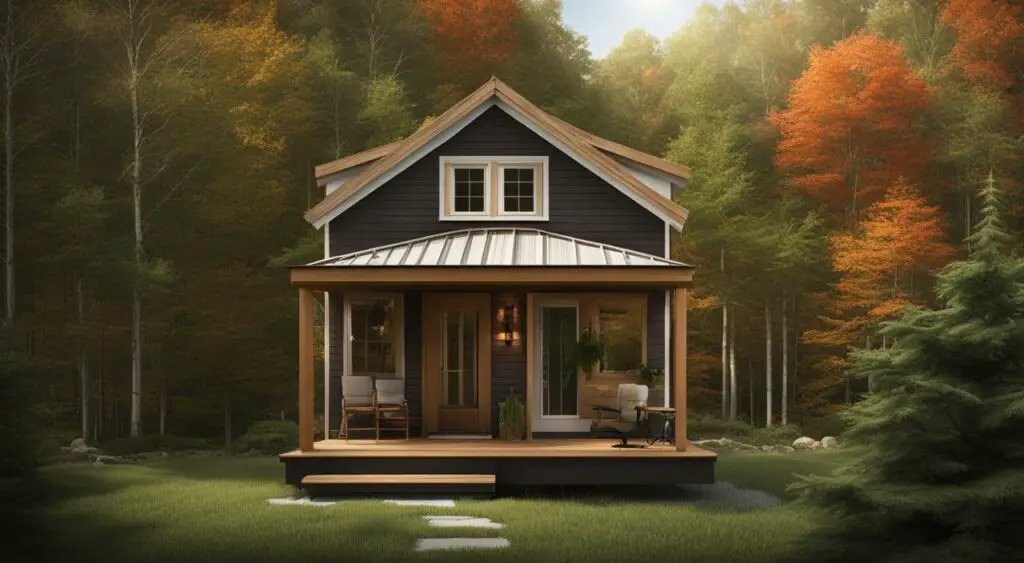
When it comes to tiny house living, understanding the legal guidelines and regulations is crucial.
In Wisconsin, there are specific legal dimensions and regulations that must be followed in order to construct and live in a tiny house.
To ensure compliance with these regulations, it is important to know about the Wisconsin Tiny House Industry Association.
The Wisconsin Tiny House Industry Association was created to support the tiny house movement in the state.
This association provides valuable resources for those interested in tiny house living, including information on legal regulations and building codes.
They also offer workshops and networking events for tiny house enthusiasts.
| Association | Description |
|---|---|
| Wisconsin Tiny House Industry Association | Provides resources and support for those interested in the tiny house movement in the state of Wisconsin |
When it comes to legal dimensions and regulations, the state of Wisconsin has specific requirements for tiny house construction.
These requirements include minimum square footage, compliance with building codes, and zoning regulations.
It is important to research these requirements before beginning construction on a tiny house.
The permitting process for tiny homes in Wisconsin can be complicated, as there are different regulations depending on the municipality.
It is therefore important to comply with municipal regulations and obtain the necessary permits before beginning construction.
Some municipalities may require additional inspections or documentation, so it is important to check with the local government.
Overall, the Wisconsin Tiny House Industry Association is a valuable resource for anyone interested in the tiny house movement.
By understanding the legal dimensions and regulations for tiny houses in Wisconsin, one can ensure compliance with the law and avoid any potential legal issues.
Tiny House Living Legality in Wisconsin
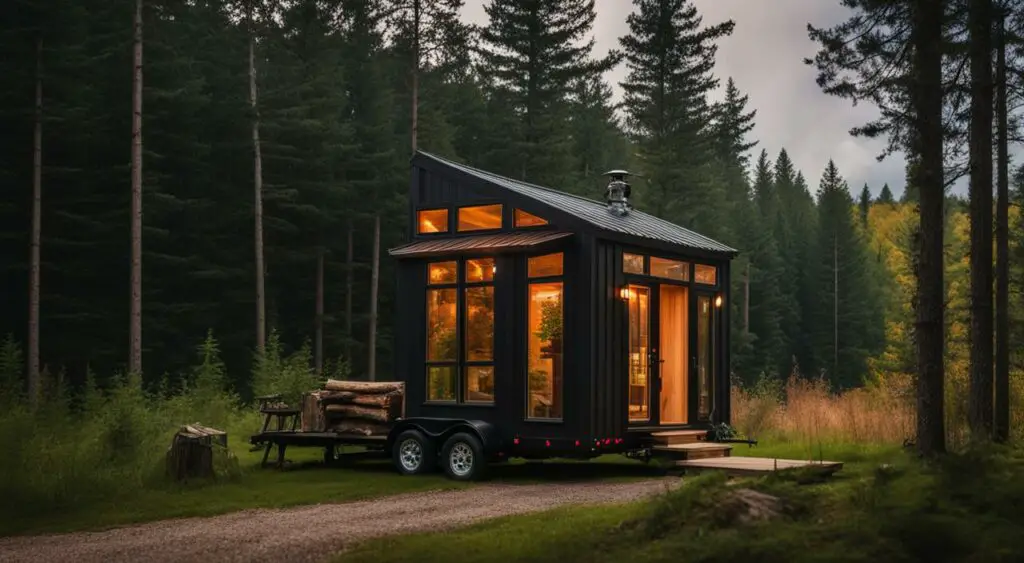
Living in a tiny house in Wisconsin is becoming increasingly popular, as it is a more affordable and sustainable way of living.
However, understanding the legal requirements is crucial for those considering this lifestyle.
In this section, we will explore the tiny house movement in Wisconsin, the regulations for tiny house living, and the rules for tiny houses on wheels.
The Tiny House Movement in Wisconsin
The tiny house movement in Wisconsin is growing as people seek affordable homeownership and more sustainable living options.
The state has seen a rise in tiny houses on wheels, which allow homeowners to travel and explore while maintaining a low carbon footprint.
The movement also encourages a simpler lifestyle, with less focus on material possessions.
Regulations for Tiny House Living
Wisconsin has state-specific regulations for tiny house living that must be followed.
The state requires a permanent foundation for tiny houses and has minimum square footage requirements that must be met.
Additionally, zoning regulations and land use restrictions must be considered when choosing a tiny house location.
It is essential to check with local authorities to ensure compliance with all regulations.
Rules for Tiny Houses on Wheels
Tiny houses on wheels are subject to different regulations than permanent tiny houses. In Wisconsin, tiny houses on wheels must be registered and licensed as recreational vehicles.
They must be parked in approved locations, such as RV parks, campgrounds, and some private properties.
Tiny house owners must also follow the state’s highway laws when towing and traveling with their tiny home.
The image above shows a beautiful tiny house on wheels in Wisconsin, which is a popular option for those seeking a mobile lifestyle.
Building Codes for Small Homes in Wisconsin
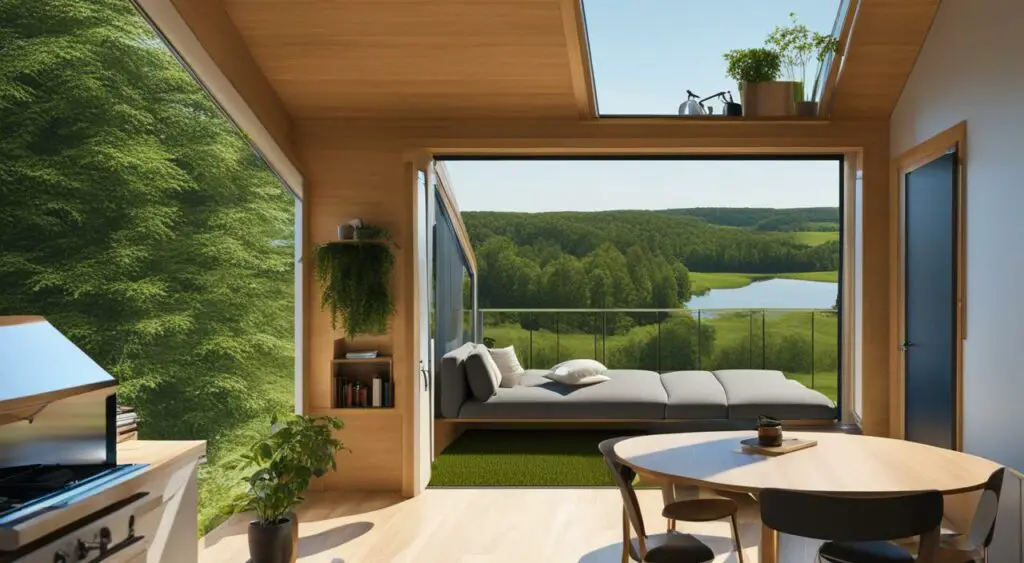
When it comes to building small homes in Wisconsin, there are specific building codes that must be followed to ensure compliance with regulations.
These building codes can vary depending on the location and type of small home being constructed.
In general, small homes in Wisconsin are subject to the same building codes and regulations as larger homes.
This means that they must meet certain safety standards, including requirements for electrical and plumbing systems, structural integrity, and fire safety.
Construction Guidelines for Tiny Homes in Wisconsin
For those building a tiny home in Wisconsin, there are additional construction guidelines to consider.
One of the most significant requirements is the minimum square footage, which varies depending on the location.
For example, in the City of Madison, the minimum size for a tiny home is 150 square feet.
In addition to minimum square footage, tiny homes in Wisconsin must comply with regulations related to egress, ventilation, and insulation.
These guidelines are designed to ensure that the tiny home is safe and comfortable for its inhabitants.
Compliance with Regulations for Small Houses in Wisconsin
Compliance with building codes and regulations is essential for anyone building a small house in Wisconsin.
Failure to comply with these regulations can result in fines or other penalties, and can even result in the loss of the property.
To ensure compliance with regulations, it is important to work with a reputable builder who is familiar with the specific requirements for small homes in Wisconsin.
This can help to ensure that the home is built safely, and that all necessary permits and inspections are obtained.
Building codes serve an important role in ensuring that homes are safe and built to last. By complying with these regulations, homeowners can protect themselves and their property, and ensure that their investment is well-protected.”

Conclusion
In conclusion, understanding the legislation and regulations surrounding tiny houses in Wisconsin is vital for anyone looking to build or live in one.
with building codes, zoning regulations, and land use restrictions can determine the feasibility and legality of tiny house living.
Wisconsin has made significant strides in recent years to address the growing interest in tiny house living, with the Wisconsin Tiny House Industry Association and other resources available to help navigate the legal landscape.
Despite some limitations and restrictions, the state offers opportunities for building and living in tiny houses, particularly through the establishment of accessory dwelling units and tiny house communities.
Whether you are a tiny house builder or enthusiast, it is important to stay informed on the latest legislation and guidelines.
By doing so, you can ensure compliance with Wisconsin tiny house legislation and regulations, allowing you to enjoy the benefits of tiny house living in a safe, legal, and sustainable way.
Other related articles
- Tiny House Laws Indiana: Unlocking the Secrets
- Tiny House Laws in Massachusetts: The Ins and Outs
- Tiny House Laws Colorado: A Friendly Guide
- Tiny House Laws in Florida: Everything You Need to Know
- Understanding Tiny House Laws in Virginia: A Quick Guide
- Tiny House Laws Wisconsin: Understanding The Law

Arc. Joseph Benson the CEO of Free tiny homes, Free Tiny Homes is a free, open-source, collaborative resource for anyone interested in building their own tiny home…


